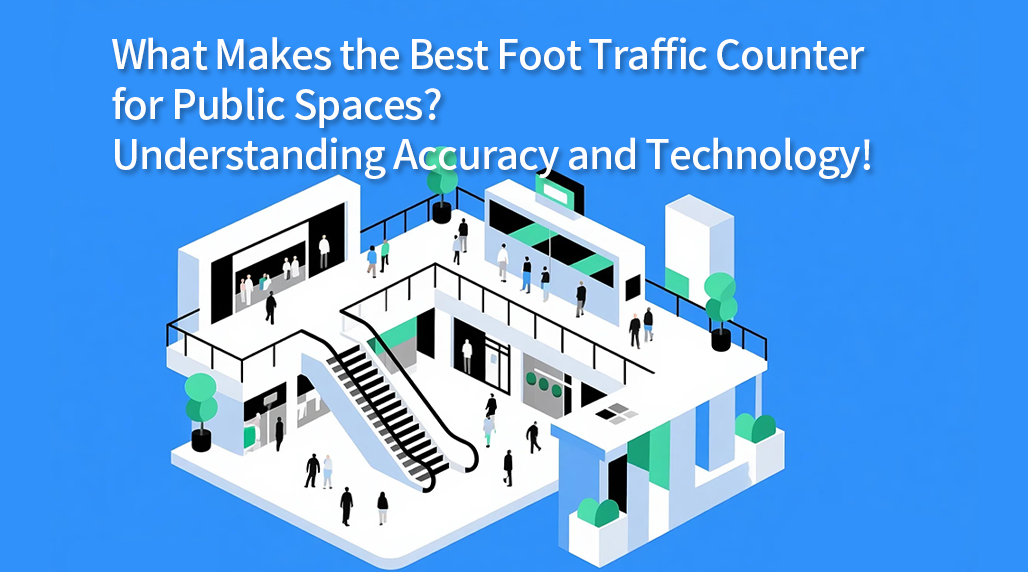Okay, so I needed to figure out how many people were actually coming through a public space I help manage. Sounds simple, right? Just count ’em. Yeah, well, it turned out to be a real headache finding something that actually worked without costing a fortune or needing a PhD to set up.
The Search Mess
First off, I jumped online, looking for “people counters“. Man, what a rabbit hole. You got these laser beam things, like in spy movies. Then there’s thermal counters, camera systems that use fancy AI… it was overwhelming. Every company claimed theirs was the “best”, “most accurate”, “easiest”. Total noise. All I wanted was a reliable number without breaking the bank or running wires everywhere.
I looked at some cheap beam counters first. Seemed straightforward. You put one box on one side, a reflector on the other. Someone walks through, breaks the beam, click. Simple.

What Didn’t Work
Well, the first cheap one I got was junk. Absolute garbage.
- The batteries died constantly. Like, every other day.
- If someone paused in the doorway, it counted them like five times.
- Groups of people? Forget it. Might count them as one, might count them as ten. Totally random.
- Sunlight sometimes messed with it too. Afternoon glare? Suddenly, we had hundreds of ghost visitors.
It was useless for getting any real data. Just frustrating. I spent more time changing batteries and trying to figure out why the numbers were so wacky than actually using the info.
Then I thought about those overhead camera systems. Looked slick. Supposedly super accurate. But then I saw the prices. Woah. Way too much for our budget. Plus, setup looked complicated – mounting cameras, running cables, connecting to networks… felt like overkill for just needing a basic headcount.
Getting Practical
I started asking around, talking to folks who managed similar spaces. One guy swore by manual clickers, literally having someone stand there and click. Not practical for us, we needed something automatic, running all day.
Eventually, I stumbled onto some simpler overhead counters. Not full camera systems, but more like sensors that detect shapes or heat from above. Less intrusive than cameras, and supposedly better than the beam counters for accuracy with groups or people stopping.
I found one that seemed like a decent middle ground. Still cost a bit more than the junk beam counter, but way less than the fancy camera rigs. It promised decent accuracy and easier installation – battery-powered option, wireless data transmission. Sounded promising, but I was skeptical after the first disaster.
Trying Again and Actually Working
So, I ordered one. Installation was… okay. Took a bit of fiddling to get it positioned right above the main entrance, making sure it covered the width properly. Had to climb up a ladder, drill a couple of holes. Not plug-and-play, but manageable.
Then came the testing. For the first week, I also did manual counts at random times, comparing my numbers to the device’s. And you know what? It was actually pretty close. Not perfect, mind you. Sometimes it would miss someone if they hugged the wall, or maybe count a large delivery box as a person. But it was way, way better than the beam thing. Like, 90-95% accurate most of the time, which was good enough for what we needed.
Here’s what made this one work better for me:
- Overhead view: Less likely to get confused by people stopping or walking close together compared to side beams.
- Decent battery life: Lasts months, not days. Huge relief.
- Wireless data: It sends the counts to a little receiver hub, then I can just check the numbers on a simple web page. No messing with SD cards or plugging stuff in daily.
- Less sensitive to light: Didn’t seem bothered by sunlight or shadows.

So, The “Best”?
Look, is it the absolute “best” foot traffic counter out there? Probably not. Those super expensive AI cameras might be technically more accurate. But for a regular public space, needing reliable data without a massive budget or IT department? This overhead sensor thing hit the sweet spot for us. It took some trial and error, and dealing with that first piece of junk was annoying. But we got there. It does the job, gives us usable numbers to see trends, and doesn’t cause daily headaches. That’s what I call practical.
